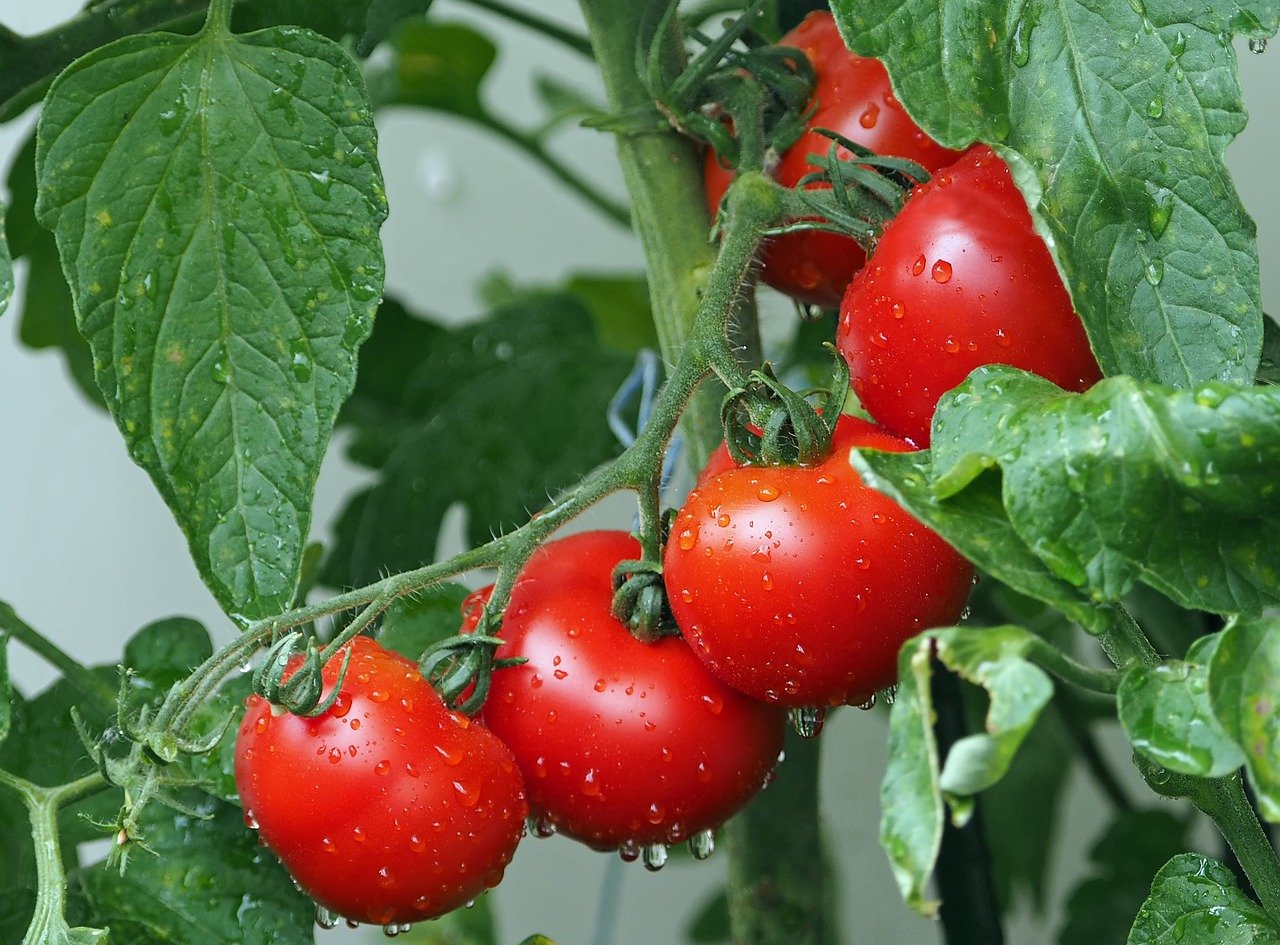Last Updated on November 14, 2022 by Real Men Sow
Moneymaker tomato is also known as Solanum Lycopersicum. This variety was first introduced in 1913. It has been extremely popular ever since. However, this is due to its reliability, ease of growing, and its delicious taste, which while it can compete with other varieties, may not be as good.
Moneymaker tomato is the best choice if you are looking for an easy-to-grow tomato. Moneymaker will give you a stress-free and more abundant growing experience than you would expect. This guide will show you how to grow Money Makers in your garden. We will cover where to plant, what fertiliser to use and how to prune.

What is Moneymaker Tomato?
Moneymaker tomato is cordon tomato. It requires pruning to ensure optimum growth. This is an annual, meaning It will eventually die in winter and need to be replanted. However, it’s easy to grow from readily available seeds so this shouldn’t be too difficult.
Although there isn’t much information on the origins, this variety’s name most likely refers to the large harvest it will produce each season. A rich harvest is a better result for a farmer or grocer who earns their livelihood from selling fresh produce.
How does the ‘Moneymaker’ Tomato look like?
Moneymaker tomato is not too different from other varieties in terms of their appearance, taste, and general characteristics. They are round, red and have a tomato-flavor. You will need to search elsewhere if you are looking for oval-shaped tomatoes or tomatoes in vibrant colours such as green, yellow, orange and purple.
Why Should You Grow Moneymaker Tomato?
These tomatoes are easy to grow and taste great. You’ll get lots of fruits from each plant. You can easily find seeds and information online about growing Moneymaker tomatoes. It will give you a warm glow of satisfaction to see your seeds become mature, fruitful plants.
It’s a great way for you to get more involved in gardening. While beautiful flowers and plants are wonderful, there is nothing like picking something from your garden and bringing it inside to make some culinary magic.
A plate of food made with ingredients that you have grown yourself is a satisfying way to eat. Tomatoes are a great example. You can slice them and put them in a salad or make a delicious spag bol with them. Or you could try something more exotic, like gazpacho or ratatouille.
How to Grow Moneymaker Tomato
Let’s now take a look at the steps to grow Moneymaker tomato in your backyard. The process is much simpler than other fruits and vegetables. It is a matter of being aware of the weather and doing the right thing at just the right time.
Planting Moneymaker Tomato Seeds
You will get the best results if you sow Moneymaker seeds indoors. Then, harden the young plants before transplanting them outside. Although you can plant seeds outside, it is not recommended.
Sow your Moneymaker seeds in pots by March 1st. In mid-April, plant the young plants in pots and allow them to mature indoors. When there are two leaves, the seedlings can be rooted. Then, harden them in May before you plant them outdoors in May. This will ensure that your plants are sturdy enough to withstand the elements and minimize frost risk.
You can use free-draining soil for seed sowing, and add a thin layer of compost to the top. You should start to see sprouts in one to two weeks.
Once you successfully planted and harvested your tomato, make sure you save the seeds the right way before eating it!
Where to Plant Your Moneymaker Tomatoes
This tomato variety thrives in bright sunlight. Even though the seeds are small, it is important to consider a large tomato plant when spacing them. This means that you should leave a gap of approximately 90 cm between each plant.
Moneymaker tomatoes can be grown in a greenhouse. You can also plant Moneymaker tomatoes in a greenhouse if you do this. The greenhouse will protect you from the colder outdoor conditions.
Supporting Your Moneymaker Tomatoes
Moneymakers can grow quite large so a stake is an effective way to support them. Just push the stake about 180cm into the ground with 25-30cm under the soil. This should be placed about 30cm in front of each plant.
Use string to tie the stem to the stake as the plant grows. Avoid making tight knots, as they can restrict the growth of the plant.
Fertilising The Tomato Plants
Apply 3-5 cm of mulch around your plants to provide nutrition and moisture. Also, you should apply 10-10-10 fertiliser as soon as the plants start to produce fruit. Then again after 3 weeks and 6 months. This will ensure that your plants produce plump and juicy fruits. To avoid stunted growth, keep at least 15 cm from the stem of your plant when fertilizing.
Watering Moneymaker Tomato Plants
Your seedlings should be watered as soon as possible after they are planted. When the top 3 cm of soil feels dry, water a few times per week. Tomatoes can be quite thirsty and will need to be watered every week throughout the growing season.
Pruning Moneymaker Tomato Plants
To encourage maximum fruit production from your tomato plants, you can also cut any shoots between the main stem stem and the smaller leaf stems. You should also remove any vertical growth that exceeds 6 to 7 fruit-bearing trunks. It may seem counterintuitive, but you will be helping the plant allocate its resources and energy towards producing the best and healthiest fruits.
Harvesting Moneymaker Tomato
Your plant should be ready for harvest by July or September depending on when it was planted and the conditions in which you live. When they are ready, you will be able to see the fruits. They will be large, juicy, and delicious. Simply pick the tomatoes and store them indoors. Regular harvesting can increase the chance of more fruiting in a given season.
Pests and Diseases When You Grow Your Moneymaker Tomatoes
Aphids
These little sap-suckers are fond of eating plants of all sizes and shapes, but they have a tendency to only eat the ones that we love most. Aphids love Moneymaker tomatoes and it’s not uncommon to see them. The first step is to be vigilant. If you spot the green pests, first remove them manually and discourage their return. If that fails, you can introduce predator bugs such as ladybirds or use pesticides ranging in strength from mild to very severe.
Blight
Blight is a serious problem that affects moneymakers. It manifests itself as brown spots and rings on leaves. The only way to stop further damage to the plant is to kill it once it’s infected. This will prevent blight from spreading to other plants. Although it is distressing to lose an entire plant, it is better than losing them all.


